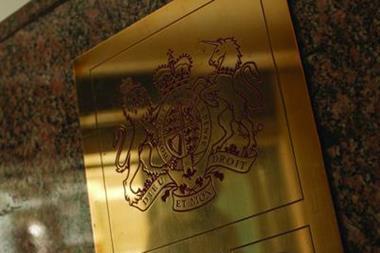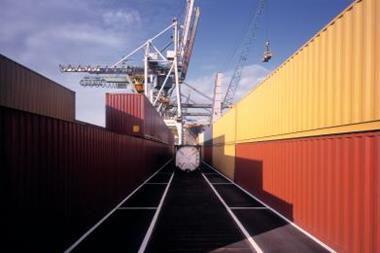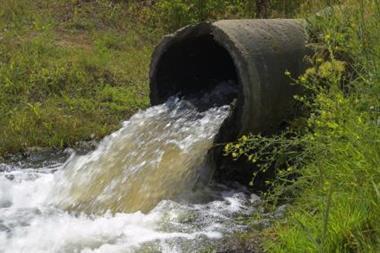New EU regulations concerning the registration of chemicals are likely to entail massive costs, but one company perceives opportunities too.
New European regulations governing the registration and testing of chemicals are expected to cost one multinational chemicals company alone €100m for testing and internal and external manpower. This is the estimate placed by Dutch based Akzo Nobel on its costs for meeting the Registration, Evaluation and Authorisation and Restriction of Chemical Substances (REACH) programme, which came into effect on 1 June 2007. The registration fees, not yet announced, will be additional.
REACH is a European directive that requires manufacturers and importers of chemical products in the European Union to demonstrate that their products are safe for people and the environment. It is also intended to improve the competitiveness of the European chemicals industry.
According to KPMG Business Advisory Services in the Netherlands, which conducted research among chemical companies on behalf of an industry consortium, it will have ‘far reaching effects on chemical suppliers and all industries that depend on chemicals, such as pharmaceutical, electronic and automotive industries in Europe and beyond.’
In principle, REACH applies to all chemicals, not just to those used in industrial processes but to those in everyday items, such as cleaning products and paints, and articles like clothes, furniture and electrical appliances. It replaces about 40 other pieces of legislation with what the EC says is streamlined and improved regulation.
The intention is to have a phased introduction of registration, with deadlines of 2010, 2013 or 2018, depending on the substance and the quantity involved. There is a pre-registration process under which all European manufacturers or importers of more than one tonne per year of any chemical substance must pre-register the product with the newly established European Chemicals Agency (http://echa.europa.eu) between 1 June and 1 December 2008. REACH also applies to substances which are of great concern to human health or the environment, even if in smaller quantities.
It is estimated that REACH covers around 30,000 existing products as well as all new products. Akzo Nobel, which is one of Europe’s largest companies, currently has about 500 substances in its portfolio that will need registration, according to Dave Buckland, the company’s corporate regulatory affairs manager. Among these products are organic peroxides, metal alkyls, fatty amines, quaternary ammonium salts, chlorine, sodium hypochlorite, hydrogen peroxide and a host of other substances, many of which are in wide use. The company is both itself a producer and a downstream user of products in its coatings business, which is the world’s largest.
Buckland explains that all Akzo Nobel business units have cross functional teams in place to ensure that the requirements of REACH are known and can be achieved for the substances they produce or handle. ‘All business units have identified their product and raw materials portfolio and have decided which products they will and will not register under REACH,’ he says.
The intention under REACH is for one registration per product, even though it may have many producers and many users. Buckland explains that is where Akzo Nobel wants to avoid having to register substances that it does not produce but only incorporates in manufactured products, such as its coatings. ‘We have had to do a lot of work with our suppliers and that will be continuing.’
“REACH covers around 30,000 existing products
Risk proliferation
As AIRMIC chairman Colin Campbell remarks elsewhere in this edition of StrategicRISK, keeping on top the constant proliferation of regulation is one of the biggest challenges risk professionals face today. In many cases, companies struggle. KPMG came up with ‘disconcerting’ results when it conducted a detailed study of more than 100 multinational chemical companies with more than 50 employees between March 2004 and April 2005.
It found that, despite extensive articles about the new chemicals regime, 40% of those polled were ‘not at all or barely familiar with REACH.’ Of those who knew about the legislation, more than half did not have an action plan, and a similar number had not assessed the reliability of suppliers.
Azko Nobel was not among them. It has been involved with REACH since its inception in 1998. According to Dave Buckland, members of the company have contributed to the legislative process and since the passage of the legislation have worked on various REACH implementation projects to try to create a workable system.
However, even for a major company that has been as intrinsically involved with new regulations as Akzo Nobel, the process is not always straightforward. Buckland explains that the EC originally said that all REACH technical guidance documents would be ready by June 2007, but it is now likely to be November 2007 before the last few are available.
This delay to the documentation and, adds Buckland, ‘some of the rather strange conclusions which are being reached within them’, mean that a substantial workload has to be condensed into a shorter period than originally envisaged. ‘While in itself, this is not in any way disastrous, it is very inconvenient when we have to deal with such a complex piece of legislation,’ he says. Nor do companies yet know the cost of registration.
Even with the additional expense of registration fees, the cost of compliance with REACH will not be material for Azko Nobel, which in 2006 had total revenues of €13.7bn. The stock market is far more interested in the two major corporate deals in which the company is currently engrossed: an agreed takeover bid of £8.1bn (€11.9bn) for Britain’s Imperial Chemical Industries (ICI), not yet confirmed by Akzo Nobel shareholders, and the divestment of its own pharmaceutical business by means of the sale of its wholly owned subsidiary Organon BioSciences, to US drugs group Schering-Plough for €11bn.
Governance and risk
“Companies will need to be very cautious abut discussing any price or quantity issues
Akzo Nobel shares are listed in Amsterdam and on the US NASDAQ exchanges. In terms of its corporate governance, the company’s annual report for 2006 states that it has a risk management and control system, as well as a system of assurance with laws and regulations in its corporate governance, to complement its corporate governance procedures. The report adds that over the last decade, the company has been enhancing and improving its corporate governance standards in accordance with relevant laws and regulations. The most notable of these are the Dutch Corporate Governance Code adopted in 2003 and the US Sarbanes-Oxley Act.
Akzo Nobel has a two tier board, and the board of management is responsible for internal controls. The individual components of these controls are, the company states, in line with the enterprise risk management framework of the US COSO regime.
In the annual report, the company breaks down major risk factors into external and internal risks. In terms of external risks, it states that it may face intense competition from new products and lower cost generic products, and that product regulation may adversely affect the company’s ability to bring new products to the market. The company is responsible for any liabilities that arise from non-compliance with laws and regulations, and the report mentions in particular antitrust laws.
REACH does have implications in terms of cartel rules. With the idea of one registration for one substance, the regulations say that companies should appoint a lead registrant to submit the necessary information on the product with the agreement of the other importers and manufacturers. There are no fixed rules for organising this process, and forming product consortia is one option. According to KPMG’s manager sustainability in the Netherlands, Erik-Jan Stork, companies will need to be very cautious about discussing any price or quantity issues.
Akzo Nobel was already very conscious of the risks of allegations of anti-competitive behaviour, having been at times involved in investigations by antitrust authorities in the European Union, US and other countries, according to the 2006 report and accounts. The company says it is dedicated to minimising such risks and in 2000, put in place a reinforced comprehensive competition law compliance programme, including training, monitoring and assessment.
In addition to its normal guidelines on competition law, Akzo Nobel issued very clear advice on REACH which has been given to people who will be working in REACH product consortia with other companies, Dave Buckland explains. ‘As long as people follow the rules set down by our legal department, we do not see any problems. In any case, most of the people working in the consortia will be technical experts, and they will not know about pricing and technical volumes.’
For companies without the resources of an Akzo Nobel, the costs of REACH will have more impact, and despite improvements in awareness since KPMG did its study, Stork believes that there may still be serious problems among smaller and medium sized companies. They will find it more difficult to find the registration costs or to pass on the costs as a result of limited bargaining power.
REACH is likely to have an impact downstream on the supply chain. Larger producers will not just look to pass on their costs but may also withdraw products whose revenue streams do not justify the costs of compliance. At Akzo Nobel, Buckland confirms, ‘A number of substances will be removed from our portfolio, and customers are currently being advised about these. These products are low tonnage, low margin substances.’
For Akzo Nobel, however, there are benefits to REACH as well as costs. According to Buckland, over the last five years the company’s product portfolio has changed considerably and become more sustainable. ‘We have invested a lot of money in eco-efficiency analysis over the last few years, and we see further improvement in our portfolio because of these. These two initiatives enable us to view REACH as a business opportunity,’ he says.
Postscript
Lee Coppack is a journalist and editor of Strategic Risk’s sister publication, Catastrophe Risk Management.



















